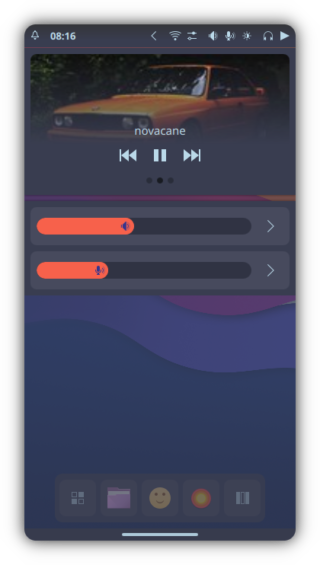Project developers nitrux introduced The first alpha issue of the user environment Maui Shell , developed in accordance with the Convergence concept, implying the possibility of working with the same applications both on the sensory screens of the smartphone and tablet and on the large laptop screens and PC. Maui Shell automatically adapts to the size of the screen and available information input methods, and can be used not only on desktop systems, but also on smartphones and tablets. The project code is written in C ++ and QML languages, and extends under the LGPL 3.0 license.
When working on conventional monitors, the shell functions in the desktop mode, c mounted on top of the panel, the ability to open an arbitrary number of windows and control using the mouse. If there is a touch screen, the shell operates in a tablet mode with vertical layout of elements and opening windows on the entire screen or layout side by side by analogy with mosaic window managers. On smartphones, the elements of the panel and applications are disclosed on the entire screen, as in traditional mobile platforms.

The same sheath can be used for desktop systems, smartphones and tablets, without the need to create separate versions for devices with different form factor. For example, when using Maui Shell on a smartphone or tablet, the shell allows you to turn a mobile device into a portable workstation, offering a full-fledged desktop interface when connecting a monitor, keyboard and mouse.

Maui Shell uses components for building graphic interfaces Mauikit and Kirigami framework, which develop the KDE community. Kirigami is an add-in above elements Qt Quick Controls 2 , and Mauikit offers ready-made interface elements templates that allow very Quickly create applications that automatically adapt to the size of the screen and accessible input methods. The project also uses components such as BlueEvil (Bluetooth Management), Plasma-NM (Network Control), KIO, PowerDevil, KSOLID and PULSEAUDIO.